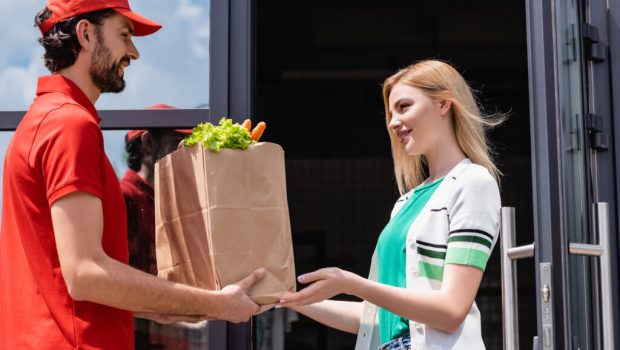New Technology for Store-to-Door Deliveries: Preventing Food Poisoning in Home Grocery Delivery
New Technology for Store-to-Door Deliveries: Preventing Food Poisoning in Home Grocery Delievery
The concept of ordering groceries to be delivered to the consumer’s home is becoming more and more popular, especially after the COVID-19 pandemic and the subsequent isolation from public places and gatherings. It has become painfully easy now: just open up the app, select what you want, and press the “order now” button. In just a few minutes to an hour, the customer can open their door and find their groceries ready to be stored in the kitchen.
Although this is easy, and not to mention very convenient, many independent contractors and companies do not implement proper food storage, temperature, and “control” during the shipping and delivery of these products. This allows for harmful bacteria (such as Salmonella or E.coli), viruses, and other germs to contaminate the food. This can subsequently make the person who consumed the food very ill and exposes the company to liability and a potential lawsuit. One Rutgers-Tennessee State University study presented at the FDA conference that “looked into the integrity of home-delivered dinners” helped bring this issue to the forefront of everybody’s minds. This study discovered that “the products are likely to be left outside for eight or more hours before they are opened and refrigerated” and that “only 42 percent of the food companies doing home deliveries provide any food safety information on their websites”. On top of this, when they did find “proper” food-safety information on these companies’ websites, it was often false.
One Step in the Right Direction:
This is why, following the FDA’s recent release of the document called “Guidance Document for Direct-to-Consumer and Third-Party Delivery Service Food Delivery”, one company is introducing their new technology to bring food safety from the market to the table.
According to GroceryDive, HomeValet CEO John Simms just recently announced “a food-safety compliance and risk management system for food delivery from Store-to-Door.” This new technology is temperature-controlled to safeguard food safety, and also has an “auto-activated” camera, which notifies the app when the door to the box opens or closes, which subsequently activates the security camera. Once the customer has been notified that the groceries have arrived, the individual can lock their box from wherever they are located, ensuring no one can contaminate or steal their groceries before they return home.
Although this new technology is not being sold to consumers yet, companies can already guess that it will have a bright future. Just a few days ago, Walmart announced that it will be partnering with HomeValet and its smart boxes. TechCrunch stated that this project will be “tested initially with customers near Walmart’s headquarters in Bentonville, Arkansas, starting this spring.” And though this company was founded several years before the COVID-19 pandemic with the goal of “offering more secure home deliveries”, this transformative product’s manufacturing was expedited upon seeing the growing need for contactless delivery during the long stretch of isolation during the pandemic. Tysons Reporter concurred that “Simms said the pandemic has created a sense of urgency within his company.”
With the growing trend of no longer making a weekly trip to the grocery store, it is critical that companies employ proper food-safety systems, such as HomeValet’s, in order to keep their customers safe. One company, however, will not “change the game,” however. Ride share companies and delivery cars all need to participate in temperature control, monitor how long food has been resting at room temperature, and provide safeguards against cross contamination during deliver.
The future is coming fast, and with it the vast growth in convenience technology. But new technology must take into account age-old problems like food contamination!








Gloss